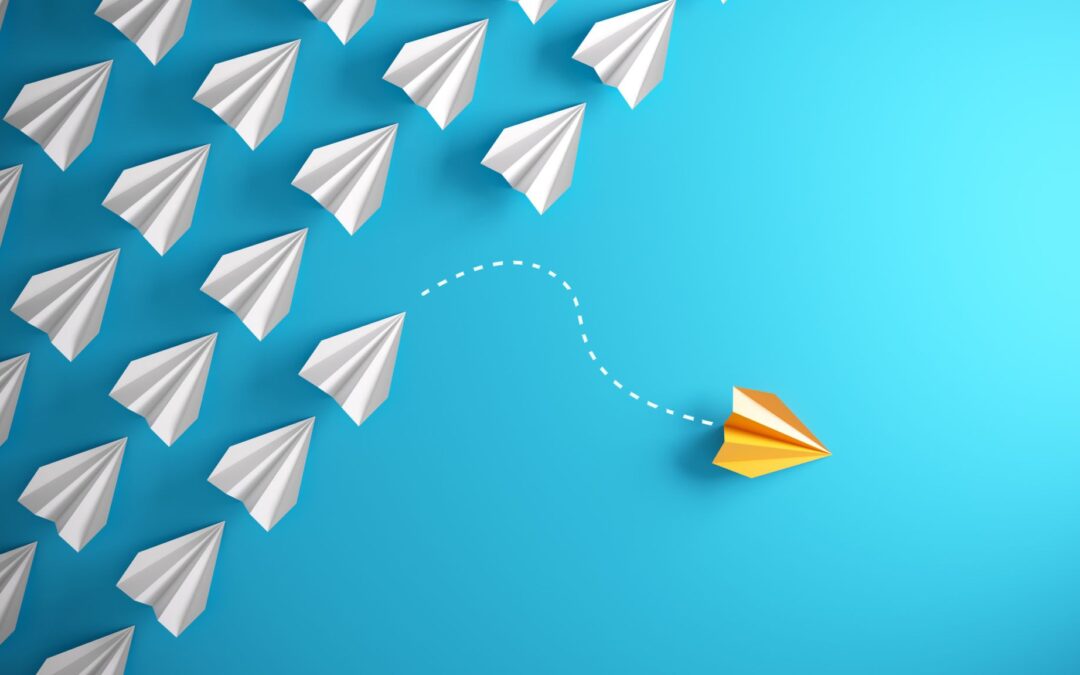The most powerful thing we can do as educators is to invite our students to explore. Service-learning and project-based learning are two ways to allow students to explore and get involved in their communities. These two experiences continue to be woven into Katie Bielecki’s teaching and have spurred on the implementation of Genius Hour in her classroom.Share on facebookFacebookShare on linkedinLinkedInShare on twitterTwitterShare on pinterestPinterest
Our students are constantly noticing injustices or experiencing inequities in their world.
Whether it’s institutionalized racism, sexism, or otherness created in everyday experiences or present in the media to which they are exposed, they are aware of the goodness and the ugliness in the world, and they are eager to shift the world for the better.
That’s why I was so excited when I learned about the concept of giving my students a “Genius Hour” (GH).
The idea here is pretty simple:
Just like big, innovative companies like Google allow employees to spend 20% of their time developing passion projects, many educators are now giving their students dedicated classroom time to developing passion projects of their own.https://www.youtube.com/embed/COF-bqZuE-I?enablejsapi=1&autoplay=0&cc_load_policy=0&cc_lang_pref=&iv_load_policy=1&loop=0&modestbranding=1&rel=0&fs=1&playsinline=0&autohide=2&theme=dark&color=red&controls=1&
My hope with the implementation of Genius Hour in my sixth-grade integrated Language Arts and Social Studies class was that my students would have the opportunity to pursue their passions, cultivate their curiosities, and see their failure or potential dead ends turn into new ideas pushing their perseverance.
I also wanted to honor their feelings of not being heard or listened to by adults even though they had great ideas.
We paired Genius Hour with project-based learning (PBL), which allowed us to examine some of the injustices in our community, locally, and as a whole class. We made significant impacts on our school through PBL, but the kids also wanted to pursue things more globally, which pushed us in the direction of more personal PBL experiences in Genius Hour.
Through Genius Hour, students begin where they are.
One of the highlights of implementing GH is that it can be as simple as allowing a student who loves dogs the option to examine why dogs shake immediately following a bath or allowing a student who’s passionate about ocean life to dive deeper into environmental causes of the bleaching of coral reefs around the world.
I start by inviting students to think about their passions and what makes them curious by taking “wonder walks” around our school and our community and by watching clips from around the globe. Each of these wonderings is then pursued by students during an allocated portion of their week.
This one-hour (Genius Hour) is dedicated to very specific tasks, including:
- Coaching students on finding passion, seeking out information, utilizing google, finding reputable sources, aligning information, and finding multiple sources to verify information
- Pairing a mini-lesson with some research time
- Working to cite sources, paraphrase, quote texts, implement infographics, make sense of data, and balance information in written form with images
- Studying presentation methods and how we might engage an audience to share our findings
Fair Warning: there is an immense amount of struggle in implementing Genius Hour for both the facilitator as well as the students.
Knowing and embracing this struggle from the onset is crucial.
Here are two ways I manage it:
- We talk about mistakes. Mistakes that Worked by Charlotte Foltz Jones is a great text to examine ideas that come from unintentional discoveries.
- We examine picture books that help inspire thinking (Kobi Yamda’s What Do You Do With an Idea?, What do You Do With a Problem?, and What Do You Do With a Chance?).
For teachers, helping to facilitate the development of questions and helping to identify keywords that might help students find helpful resources can take several weeks.
Watching students arrive at dead ends, redirecting those students, and helping them to see the success in their perceived failure is so valuable but also takes time and patience.
There are so many tools and resources to help you get started Genius Hour and get students excited!
- We utilize the book The Crown on Your Head by Nancy Tillman to launch the school year and the idea of GH with the hope that students honor their crowns as forever changing as well as honoring the crowns of others (the uniqueness of others)
- Get practical implementation tools from Joy Kirr’s LiveBinder
- For help with pursuing passion and creating, watch Caine’s Arcade and the Cardboard Challenge Part I and Part II
- For Global Explorations and cultivating curiosity, consider using Project Explorer
- Read Angela Maier’s Classroom Habitudes
Utilizing GH accompanied by these tools were key to my students’ learning and successes.
Giving students voice and choice in my classroom and ultimately their world has proven to be extremely empowering. When they see that they can be change-makers, the relevance of school and their learning become so clear. GH has been a catalyst for projects that have spanned years, earned students grants and even developed into one student’s non-profit organization: Suitcases For Kids.
Math is reading, and science is writing. They need to understand history and social constructs to make sense of the world around them.
The most authentic and meaningful learning we can offer our students is to invite them to explore.


